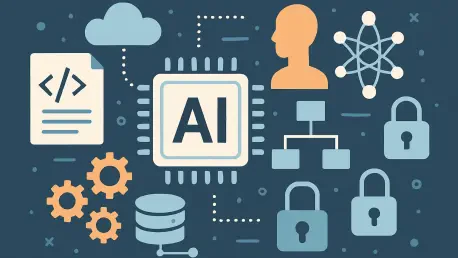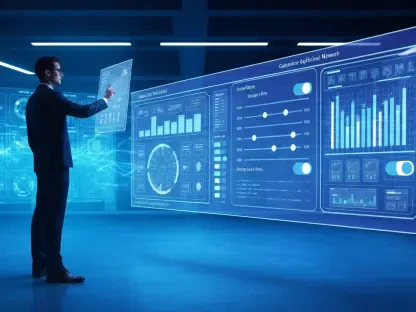In the rapidly advancing landscape of artificial intelligence, large language models (LLMs) such as Claude and GPT have showcased extraordinary capabilities in generating human-like text and solving complex problems. However, a significant challenge persists: these models often operate in isolation from real-time, real-world data, rendering them less effective in dynamic, enterprise-level scenarios where up-to-date context is crucial. This gap has hindered AI from reaching its full potential in practical applications. Enter the Model Context Protocol (MCP), an innovative open-source standard poised to redefine how AI systems interact with external environments. By seamlessly connecting AI models to live data sources, APIs, and digital tools, MCP addresses a fundamental limitation, enabling smarter, more relevant responses. Far from being just another technical concept, this protocol represents a transformative shift, promising to make AI an indispensable asset in business settings. Let’s explore how this emerging standard could shape the future of AI by bridging the divide between static training data and the ever-changing real world.
Bridging the Gap: Understanding MCP’s Framework
The essence of MCP lies in its role as a universal interface that links AI systems with external resources in a structured and secure manner. Comprising three primary components—MCP servers that provide access to APIs and datasets, MCP hosts like Claude Desktop that initiate data requests or actions, and MCP clients which are the AI models making decisions based on user inputs—this framework allows for dynamic, context-aware interactions. Unlike traditional methods that require custom coding for each integration, MCP standardizes the process, enabling AI to autonomously determine which functions to access based on specific queries. This streamlined architecture not only simplifies connectivity but also enhances the adaptability of AI systems, making them more intuitive and responsive to real-world needs across various industries.
Beyond its technical design, MCP stands out for its potential to transform AI from a standalone tool into a deeply integrated partner in enterprise workflows. By facilitating seamless access to domain-specific information, it ensures that AI outputs are grounded in current data rather than outdated or generalized knowledge. This capability is particularly valuable in sectors where precision and timeliness are paramount, such as finance or logistics. The protocol’s open-source nature further amplifies its impact, inviting collaboration and innovation among developers and organizations. As a result, MCP paves the way for AI to move beyond generic responses, delivering tailored insights that align with specific business challenges and objectives.
The Critical Role of Context in AI Effectiveness
Context serves as the cornerstone that elevates AI from merely functional to truly transformative in real-world applications. Current LLMs, while proficient in language generation, often stumble when faced with tasks requiring up-to-date or specialized knowledge due to their reliance on static training datasets. This limitation frequently results in inaccuracies, vague outputs, or even fabricated information, undermining trust in AI solutions for enterprise use. MCP directly addresses this issue by providing a scalable mechanism for AI models to connect with live data from organizational systems. By integrating real-time information, the protocol ensures that responses are not only accurate but also relevant to the specific context of the query, enhancing reliability across diverse scenarios.
The implications of context-aware AI, enabled by MCP, are profound for industries that depend on precision and actionable insights. Consider applications like investment planning, where access to the latest market trends can mean the difference between profit and loss, or customer service, where understanding current client interactions can personalize responses effectively. MCP empowers AI to deliver targeted, verifiable outcomes by tapping into enterprise databases and tools on demand. This shift reduces the risk of errors and boosts confidence in AI-driven decisions, marking a significant step forward in transitioning experimental projects into robust, business-critical solutions. Ultimately, MCP redefines the value of AI by anchoring its capabilities in the realities of the present rather than the constraints of past data.
Redefining Development: Key Advantages of MCP
One of the standout strengths of MCP is its ability to dismantle longstanding obstacles in AI development, offering a suite of benefits that streamline the creation of powerful applications. By enabling frictionless access to data, the protocol allows even non-technical users, such as business analysts, to interact with complex enterprise systems through natural language queries. This democratization of technology eliminates the need for extensive coding knowledge, broadening the reach of AI tools. Additionally, developers benefit from rapid prototyping capabilities, as MCP transforms APIs into easily callable functions, slashing the time from concept to functional prototype. This efficiency is a game-changer for teams aiming to innovate quickly in competitive markets.
Equally compelling is MCP’s support for enterprise scalability and interoperability, addressing critical needs in large-scale deployments. Secure connections to internal systems ensure that data governance and privacy are maintained, a non-negotiable priority for organizations handling sensitive information. Moreover, the open nature of the protocol fosters compatibility across various tools and LLMs, preventing the pitfalls of vendor lock-in and encouraging a flexible development ecosystem. Practical implementations, such as Precisely’s MCP server for location intelligence, highlight how users can leverage natural language to analyze geospatial trends or assess risks without setup complexities. These advantages collectively position MCP as a catalyst for reimagining how AI integrates into business processes, driving both accessibility and impact.
Practical Steps to Implement MCP
Adopting MCP is a surprisingly accessible endeavor, thanks to its lightweight and adaptable design tailored for a range of users, from developers to enterprise leaders. Open-source resources, such as Precisely’s public repository, provide comprehensive quickstart guides, authentication setups, and sample prompts to ease the integration process. These tools enable developers to connect MCP servers with both local and remote systems, supporting secure and compliant deployments in hybrid environments. For those new to the protocol, starting with platforms like Claude Desktop offers a user-friendly entry point for local testing before scaling to production-level rollouts. This phased approach ensures that use cases can evolve organically while minimizing initial complexity or risk.
To maximize the effectiveness of MCP implementations, maintaining a streamlined server setup is essential for optimal performance. Focusing on essential workflows by limiting callable functions helps keep AI prompts efficient, ensuring that context windows remain manageable and responses stay sharp. Enterprises can further customize MCP servers to align with specific operational needs, balancing security with accessibility to meet compliance standards. This flexibility makes the protocol suitable for diverse applications, whether it’s enhancing customer profiling or supporting risk analysis. By following these practical strategies, organizations can harness MCP to build context-rich AI solutions that deliver measurable value, paving the way for broader adoption across sectors.
Envisioning an Open Future for AI Ecosystems
MCP aligns seamlessly with the growing momentum toward an open, interoperable AI ecosystem where data integrity and accessibility are prioritized over proprietary silos. By standardizing how AI models connect to external resources, the protocol empowers organizations to maintain control over data sharing while fostering cross-team collaboration and innovation. This shift is crucial in an era where businesses demand AI solutions that are not only powerful but also adaptable to unique operational contexts. MCP’s emphasis on openness breaks down barriers, ensuring that data—regardless of its location—becomes a usable asset for driving smarter decision-making and strategic growth.
Looking forward, the vision behind MCP signals a broader transformation in how AI can evolve to meet real-world demands. Bridging the gap between ambitious technological goals and practical business needs, the protocol lays the groundwork for models that are inherently more useful and responsive. It challenges the limitations of current systems by promoting an environment where experimentation and scalability coexist. As industries continue to integrate AI into core functions, MCP stands as a foundational step toward unlocking the technology’s true potential, fostering a future where innovation is not constrained by technical or organizational boundaries but propelled by shared standards and collective progress.
Reflecting on MCP’s Transformative Impact
Looking back, the emergence of MCP marked a pivotal moment in the journey of AI, addressing the critical need for contextual awareness in enterprise applications. Its structured framework for connecting AI models to real-world data and tools redefined accuracy and usability, setting a new benchmark for what AI could achieve. The benefits, from streamlined development to scalable interoperability, underscored its role as a catalyst for innovation. For those eager to explore this protocol further, resources like Precisely’s Developer Portal offer a gateway to building context-aware solutions. As a next step, stakeholders are encouraged to experiment with MCP in targeted use cases, leveraging its open-source tools to address specific challenges. By fostering collaboration and prioritizing data integrity, MCP not only solves immediate gaps but also lays a robust foundation for future advancements, ensuring AI continues to evolve as a practical, indispensable ally in business landscapes.









